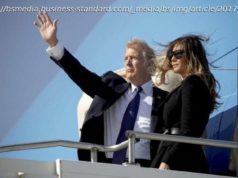And only one seems like a shoo-in with the Baby Boomer crowd.
Beto O’Rourke’s announcement Thursday that he’s seeking the presidency will compound a demographic mismatch that could powerfully shape the outcome of the 2020 Democratic race.
The sprawling Democratic field is already so large, and so diverse in race and gender, that strategists are expecting tough competition in the early stages for almost every group of voters imaginable. But there’s one potential exception to that pattern: older voters. Even in a rapidly diversifying party, it’s virtually certain that most Democratic primary voters next year will be older than 45. Yet most of the top-tier candidates look best suited to compete for younger voters, an imbalance that grew more lopsided with the announcement from O’Rourke, who connected powerfully with youthful audiences during his narrow loss in last fall’s Senate race in Texas.
This divergence could provide an important tactical advantage for former Vice President Joe Biden, who is likely to rely more on older than younger voters if he enters the race. It also suggests that O’Rourke is on a collision course with Bernie Sanders over the allegiance of youthful voters, who fueled the Vermont senator’s 2016 campaign.
Read: A cheat sheet for the 2020 presidential race
Strategists working on the 2020 contest almost uniformly agree that no candidate can expect to amass predominant support from any group of voters in the first states on the calendar. “What is so fascinating about this race is a lot of people are going to be competing for the same spaces,” says Ben Tulchin, the pollster for Sanders. As a result, breadth of support might be more important for the contenders than depth: The candidates who emerge from the tangled pack in the race’s opening laps will likely need to piece together slivers of support from a wide variety of groups. “That’s the way the early states are going to be decided: who can tap into the most buckets, instead of the one that owns a whole lane to themselves,” said a senior adviser to Senator Amy Klobuchar, who, like some other advisers I spoke with, requested anonymity to discuss the race’s dynamics.
But as the field narrows, that equation could flip, many strategists believe. As the number of candidates shrinks, one of the critical variables is likely to be which survivors can consolidate the most support the fastest from the groups most drawn to them. And for all of the candidates already jostling in the race, there might be relatively few alternatives able to compete with Biden for middle-aged, middle-of-the-road voters, particularly in the middle of the country.
This potential mismatch between the pools of voters and candidates looms so large because, even amid all of the party’s other demographic changes, older voters constitute a surprisingly large share of the Democratic primary electorate. Fully 60 percent of primary voters in 2016 were 45 or older, according to an analysis of all 27 exit polls that year conducted by the CNN polling director, Jennifer Agiesta. And while the Democratic primary electorate is growing more racially diverse, about two-thirds of those relatively older primary voters were white.
In the coming months, before the 2020 field is winnowed, it’s easy to envision multiple candidates targeting African American voters (Senator Kamala Harris, Senator Cory Booker, and Biden, with Sanders aiming at the youngest among them); Hispanic voters (O’Rourke, Biden, Sanders, and the former federal housing official Julián Castro); well-educated white women (Klobuchar, Harris, their fellow senators Elizabeth Warren and Kirsten Gillibrand, and maybe O’Rourke); activist liberals (Warren, Sanders, and, to some extent, Harris); and centrists (Biden, Klobuchar, O’Rourke, former Colorado Governor John Hickenlooper, and maybe Booker).






